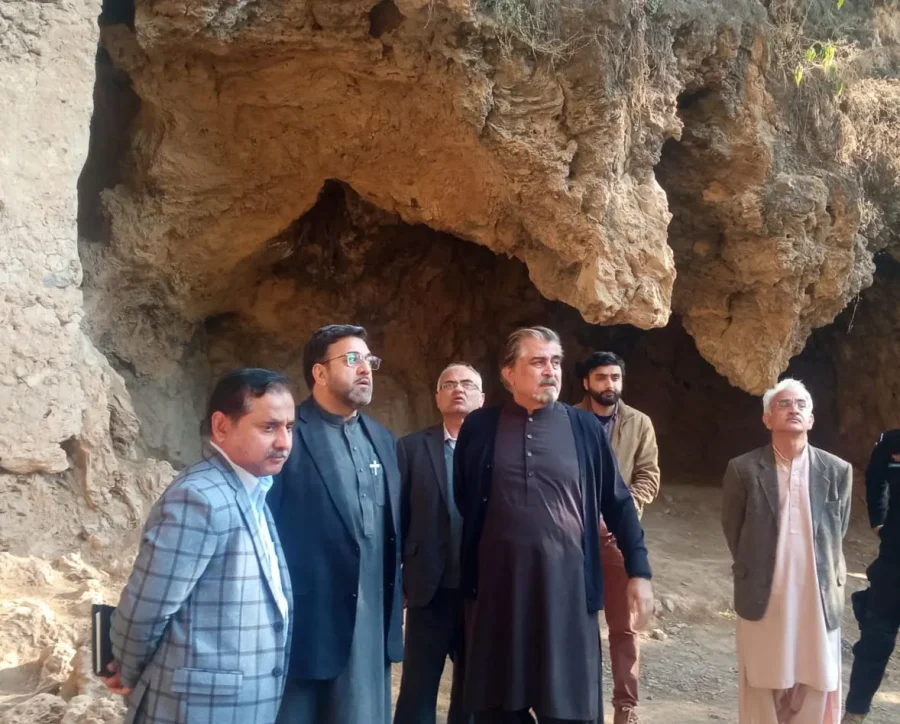Zubair Qureshi
Caretaker Federal Minister for National Heritage & Culture Jamal Shah on Monday laid the foundation stone of the project for conservation, preservation and development of Islamabad’s historic “Shah Allah Ditta Caves.”
Federal Secretary National Heritage and Culture Division Humaira Ahmed, Director General (DG) Department of Archaeology & Museums (DOAM) Dr Abdul Azeem and other senior officials were also present on the occasion.
Speaking on the occasion, the minister said that the Department of Archaeology & Museums (DOAM) Islamabad had declared the site of Shah Allah Ditta Caves as “Protected Antiquity” under Antiquities Act 1975.
The DOAM, National Heritage & Culture Division, has started conservation, preservation, restoration & development of the caves during the current financial year.

He said that the work included archaeological excavation, complete documentation of the site, geotechnical study of binding materials, construction of drainage works as well as Soft & Hard landscaping.
Shah Allah Ditta caves are situated on the southern side of the Margalla Hills in a small picturesque valley some 14-km north-west of the capital city. These caves consist of two natural rock shelters of Kanjur stone situated on either side of a natural spring of hot water.
The front side of the eastern caves is covered with a wall of undressed Kanjur stone laid in mud mortar. Facade of the cave is covered with mud plaster having many red coatings. On the smooth surface of the wall some paintings are executed in black colour but in the later period the paintings are covered with a layer of white wash.









